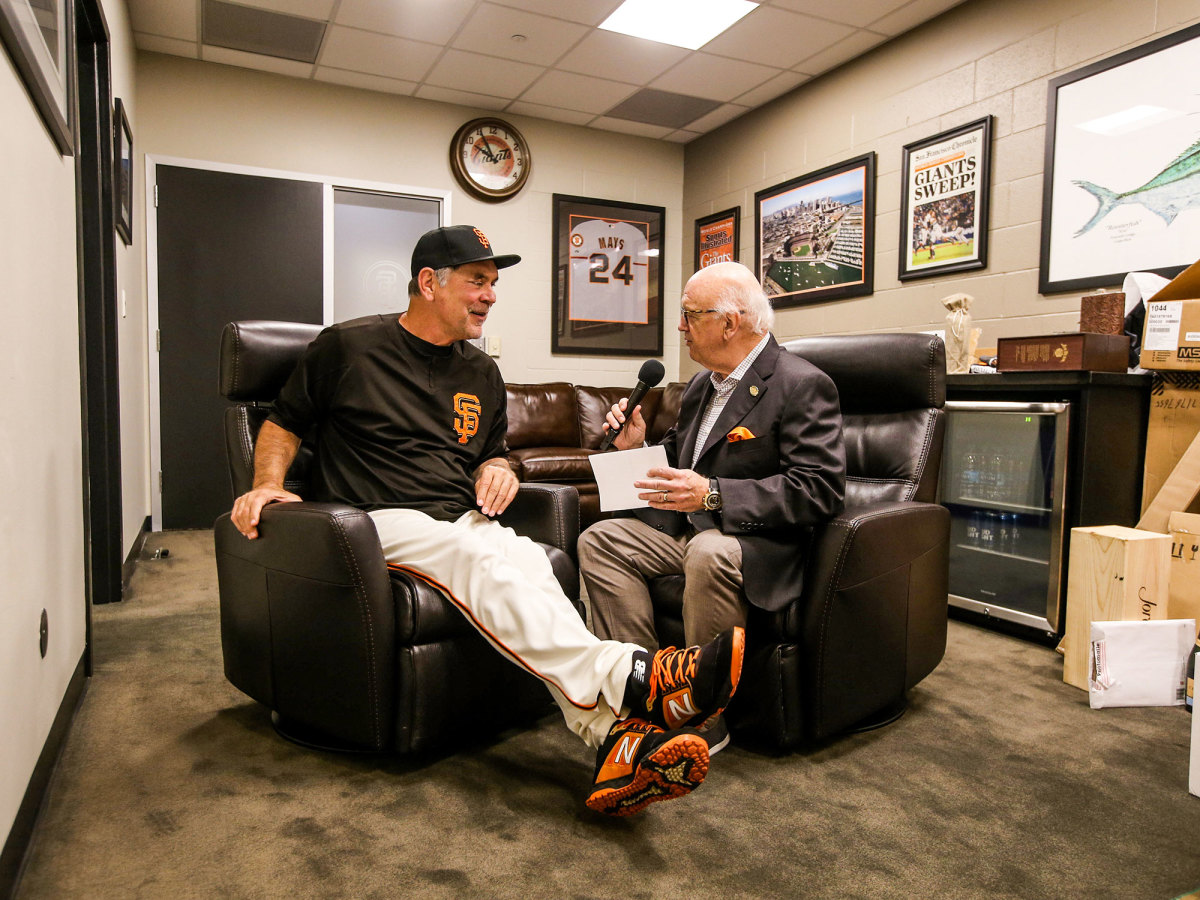MLB Broadcasters Face New Reality If Season Begins
If we do get Major League Baseball in 2020, the voices you hear coming through your television or radio will probably be watching the game the same way you are: on a screen.
This unprecedented season brings along unprecedented working conditions for play-by-play broadcasters and color commentators everywhere. No crowd. No player interactions. And if their team is on the road, no game to broadcast in front of them. Broadcasters likely won't be traveling to away games this season.
To shed some light on the challenges ahead, Sports Illustrated spoke with Hall of Fame broadcaster and San Francisco Giants radio voice Jon Miller on what he's expecting from a season unlike any other.
This interview has been lightly edited for brevity and clarity.
SI: What limitations are broadcasters facing this season?
Jon Miller: We’ll be totally isolated from the players. We won’t ever be around the players or the manager or the coaches or anybody in that group. So they’ll be in their own bubble and neither us nor any of the writers will be around the players at all. We won’t be allowed in the clubhouse, we won’t be allowed in the dugout, the batting cage, nowhere down on the field at all.
SI: How does that isolation affect your job?
JM: It’s huge. On a daily basis, we always talk to the manager to find out the latest. We see who’s in the lineup, who’s not in the lineup. We can find out why this guy’s in or why that guy’s out. Is there an injury? Is he tired? We’d be able to get that info.
Often the best time is at the batting cage to find something out from a player, maybe there was a play the night before and you want his take on it. Or even How’s the field playing? How’s the dirt in front of home? Is it a true hop on this infield? There’s little things about how the field’s playing that you want to get from somebody like Brandon Crawford or Evan Longoria or Brandon Belt.
So we won’t have any of that. The PR people will try to arrange, I guess via Zoom, a meeting with all of (the broadcasters) and the manager before the game. That should be workable.
The other part is when the team goes on the road, we’ll still go to Oracle Park and still go to our broadcast booth. We’ll do the game from those booths but by watching the game on a TV monitor.
SI: So you’re not going to travel with the team on any road games?
JM: No. As I understand it, we’re not allowed to go with the team, period. Apparently the radio broadcasters, we could go to road games. But not the TV broadcasters. I’m not exactly sure.
The question would be, say the (Giants) play in L.A. Well, how would we get to L.A.? I don’t know if any of us are anxious at this point to jump on a commercial flight. Even if it's me and (Giants broadcaster Dave Flemming) and (producer Darren Chan), let’s say we decide we’ll drive to L.A. Are we going to drive in three separate cars? Would we all drive in one car and wear masks? Would that be safe?
When we go from the hotel to the ballpark to the games in L.A., would we drive in three separate cars? Darren needs to get there a lot earlier than we do to get everything set up for us. So we’d at least need two cars. And then when the whole series is over, we’re going to get in our three cars and drive back to the Bay Area?
SI: Seems to me there is a lot still to figure out.
JM: I think at this point we’re better just driving to (Oracle Park) and doing the game off the TV monitor from there.
…Apparently we’ll have two or three exhibitions with the Giants and the A’s playing. At least one of those games will be in Oakland. So the plan is to broadcast that game from (Oracle Park) on the TV monitor as sort of a dry run on how to go about doing that. We'd figure out what’s there, what’s not there, what we need to be mindful of, what we need to ask for.

SI: What kind of set up would you want to call road games off a monitor?
JM: I think we need at least a second monitor where we could see the whole field. You could see how the defense is set up, if they’re in the overshift in the infield. You need to be able to see that. But you need to see it when you need to see it, not waiting on that (TV) director in that other city to show you what he wants to show you.
…I remember doing a game in Atlanta last September. In that new ballpark they have no protection in the broadcast booth for rain or for sun. So the sun was pouring right into the booth. I was in direct sunlight. … So Darren Chan put up a blanket to keep me out of the sun. There was nowhere else for me to go.
So I broadcast the game for the next couple of innings off the monitor in the booth, sitting behind this blanket. A guy hits a ball to right field, it turned out it was a home run to the opposite field. Well I see him hit the ball and I see it’s in the air, but I don’t know where. When you’re actually watching the game you can tell immediately where it’s hit and how well it’s hit. But off the TV monitor, I didn’t have a clue. I knew he hit in the air. It might not have been the greatest home run call ever.
There’s a swing … ball hit in the air, out into right field … the right fielder’s going way back … it’s gone. Ooooh boy.
Looking back on it now, I was kind of glad that happened. I was doing it off the monitor like we’ll be doing routinely for the road games this year.
SI: Do you have any anxiety about how the broadcasts will go this season?
JM: It’s all just an unknown. For me the main thing is that it’s a ballgame and I’m very excited to have a ballgame to broadcast again. By the same token, the unknown part is that the crowd, the ambiance in the broadcast, is a critical part of a broadcast whether it’s radio or TV. The roar of the crowd is what makes any moment that much bigger. … The crowd is the most important ingredient in terms of bringing the listener into the ballpark. But now there is no crowd.
Say a Giants hitter hits a home run and you pull back, letting the roar of the crowd just wash over the listener. That will never happen. It’s a big home run and maybe we’ll hear the guys in the dugout going YEEHAW! YEAH! … And even then, you have to be a little careful of catching a BLEEPIN’ A!
Whoops.
SI: I don't anticipate any broadcasters going silent in big moments.
JM: You could try it and see what you get, but you won’t get a roar of the crowd. Let’s face it, any sport, the roar of the crowd is the excitement. That’s the real excitement that draws you to wanting to watch the game, listen to the game, go to the game.
I think it would be good if we had some sort of generic crowd murmur (on the broadcast this season). … It’s the soundtrack of a generic baseball broadcast in the summertime. I just have a feeling the crowd would make it sound like a baseball game. It would be comforting.
I even thought when we do these exhibition games we could do one inning with the silence and roll some crowd in for the next inning and just decide which one we like better.
SI: Any other oddities broadcasters might be facing this season?
JM: They’re talking about all sorts of different things, like all of us might sit in separate booths. Because let’s say one guy gets the virus and they’re sitting there working elbow-to-elbow with another broadcaster in the booth, well then both of them have to be removed and go into quarantine for a certain time and you’ve lost both guys. If they’re in separate booths and they’ve stayed separate, one guy gets sick and can get extracted while the other guy is still there. … It’s really weird, and I don’t think any of us would have a problem being in the same booth with each other but by the same token, maybe the radio station or the TV station has a problem with it for very pragmatic reasons.
